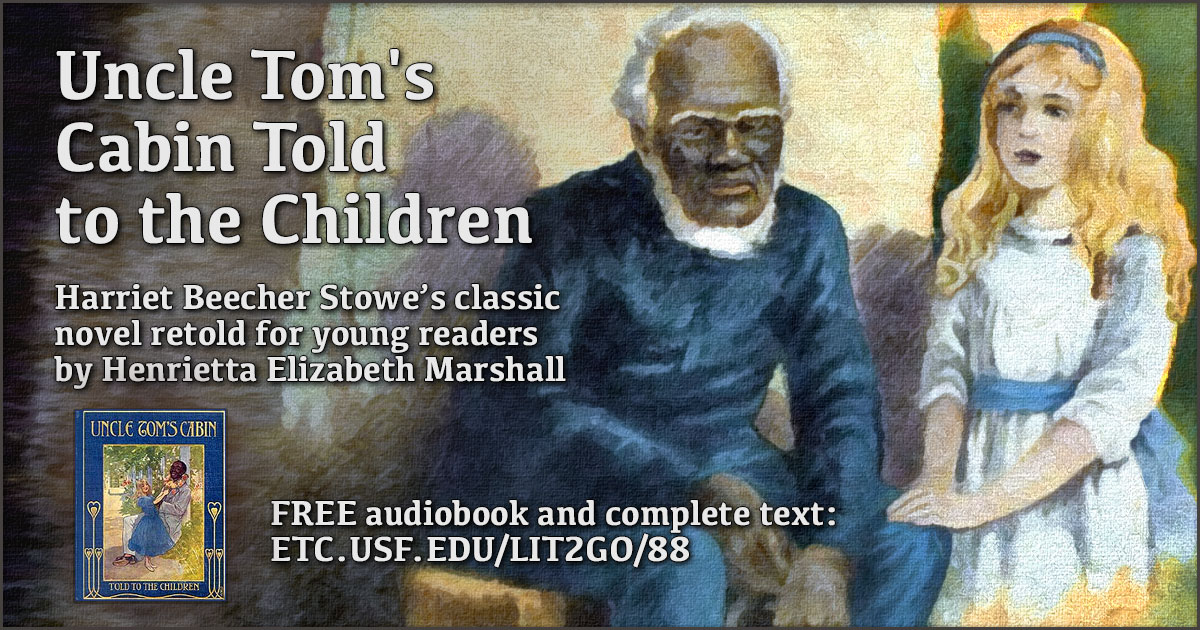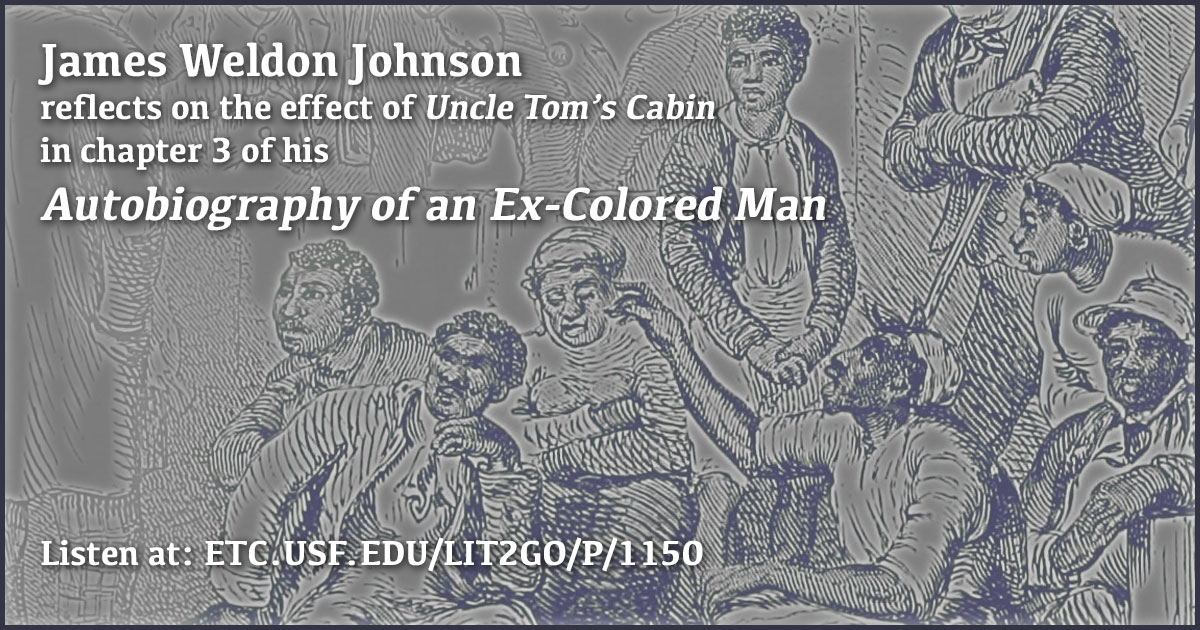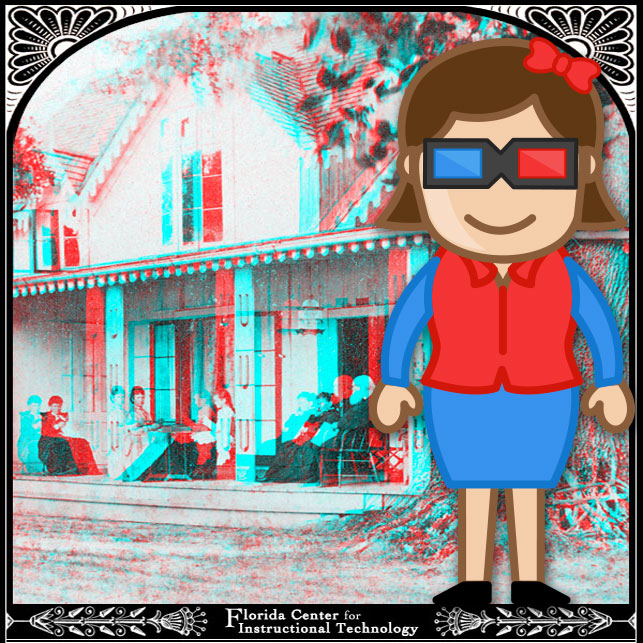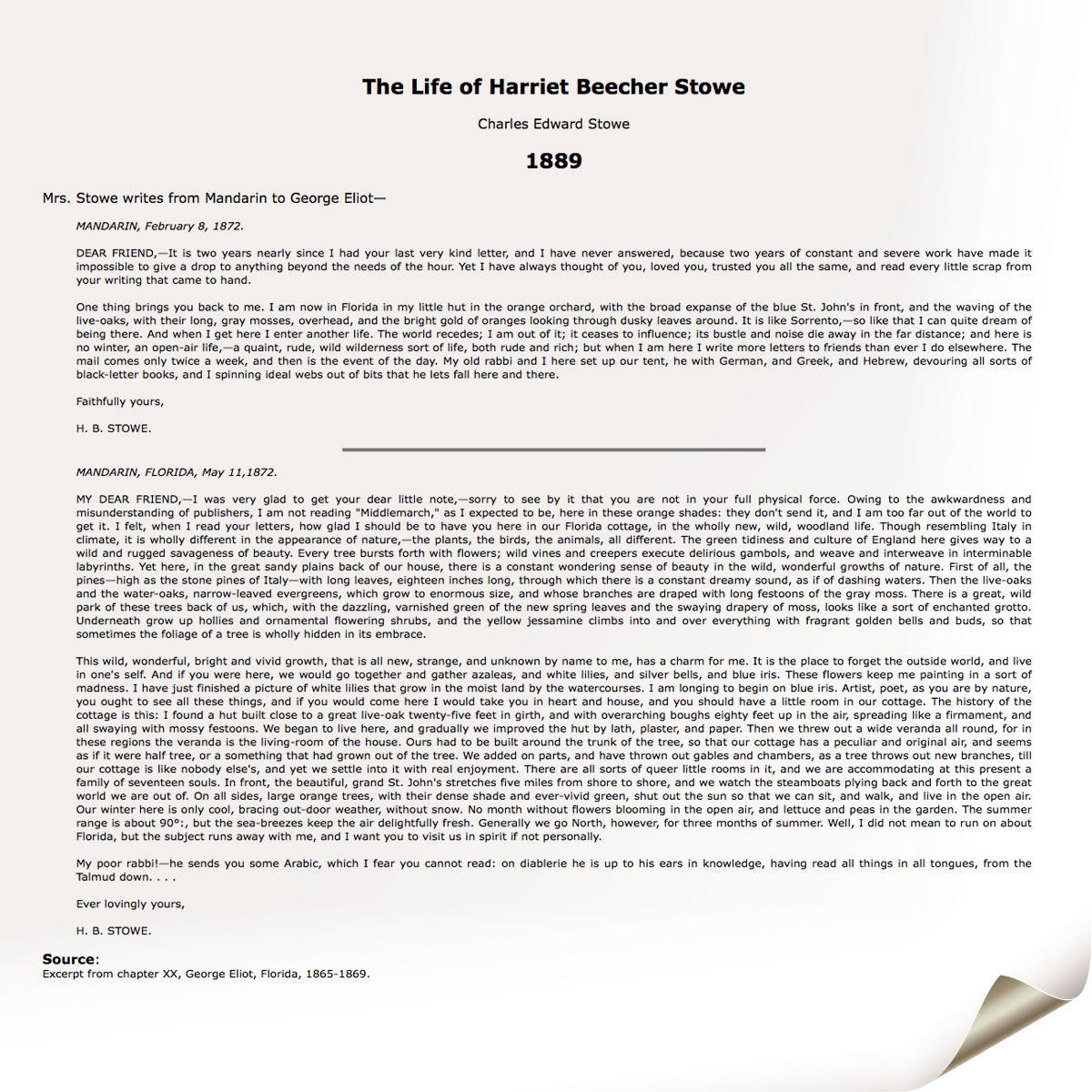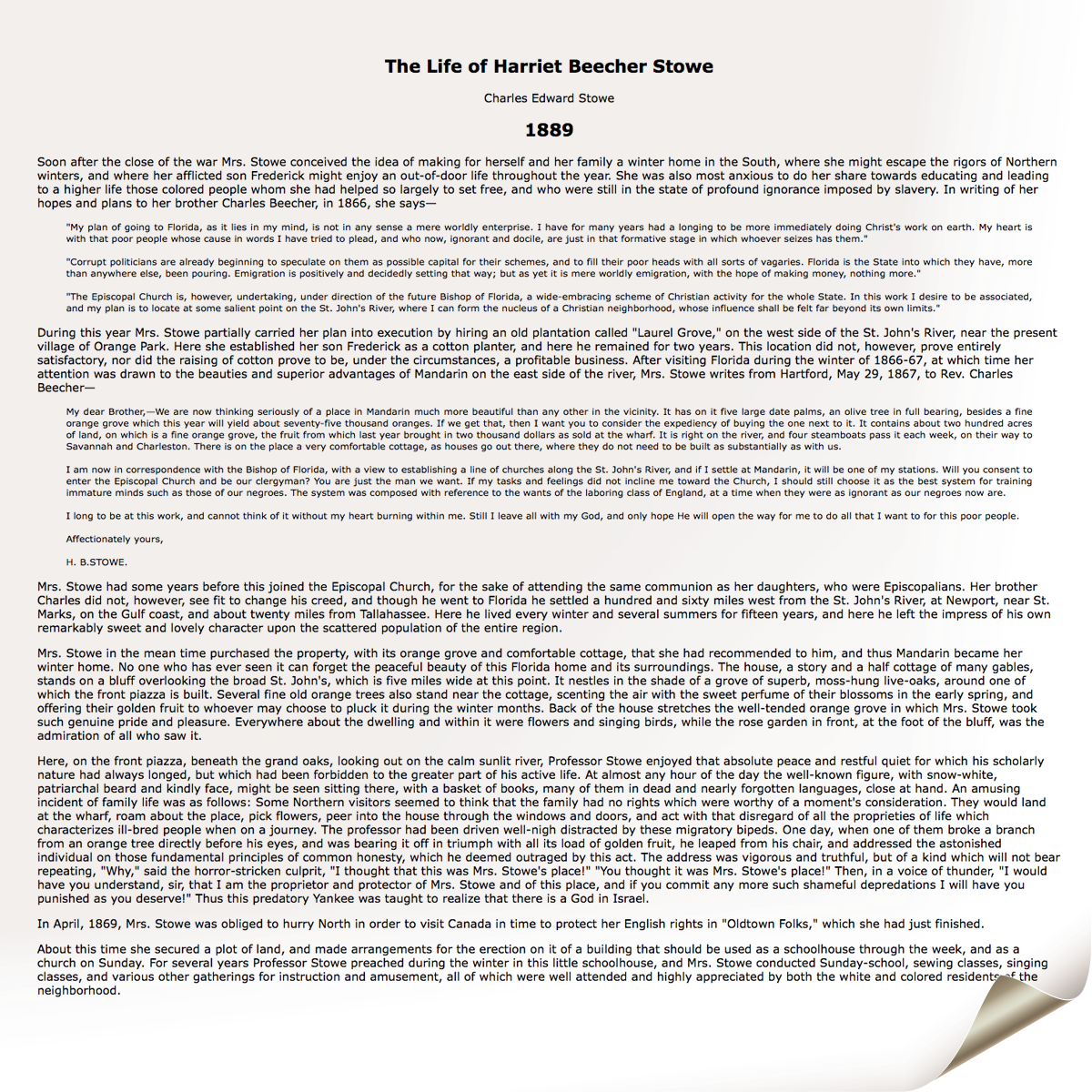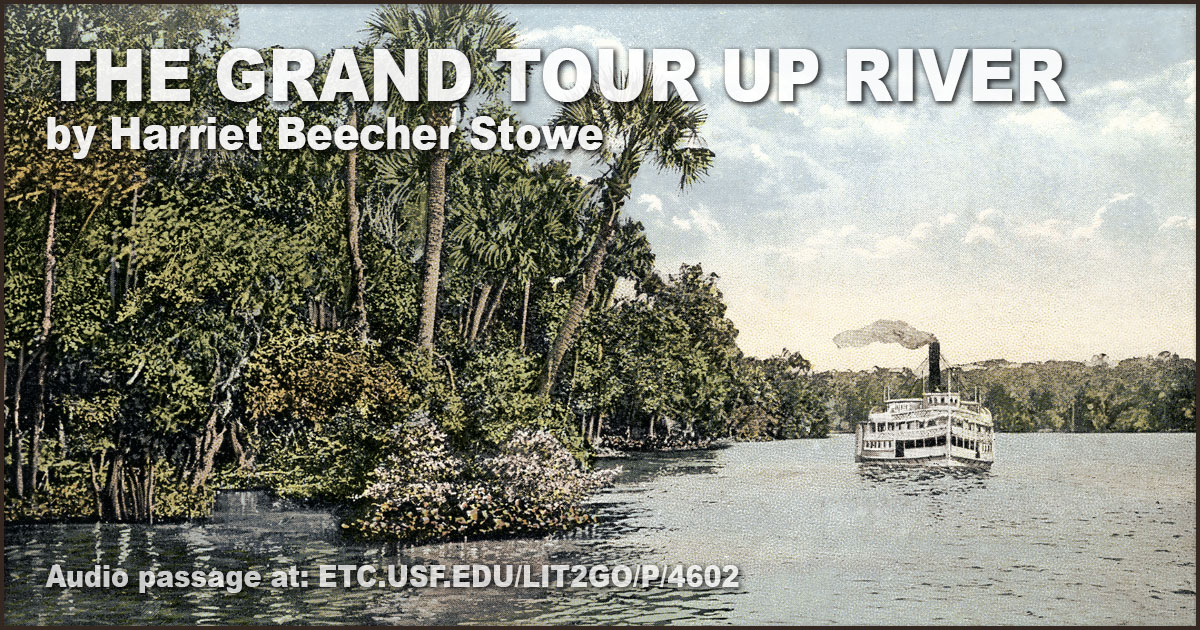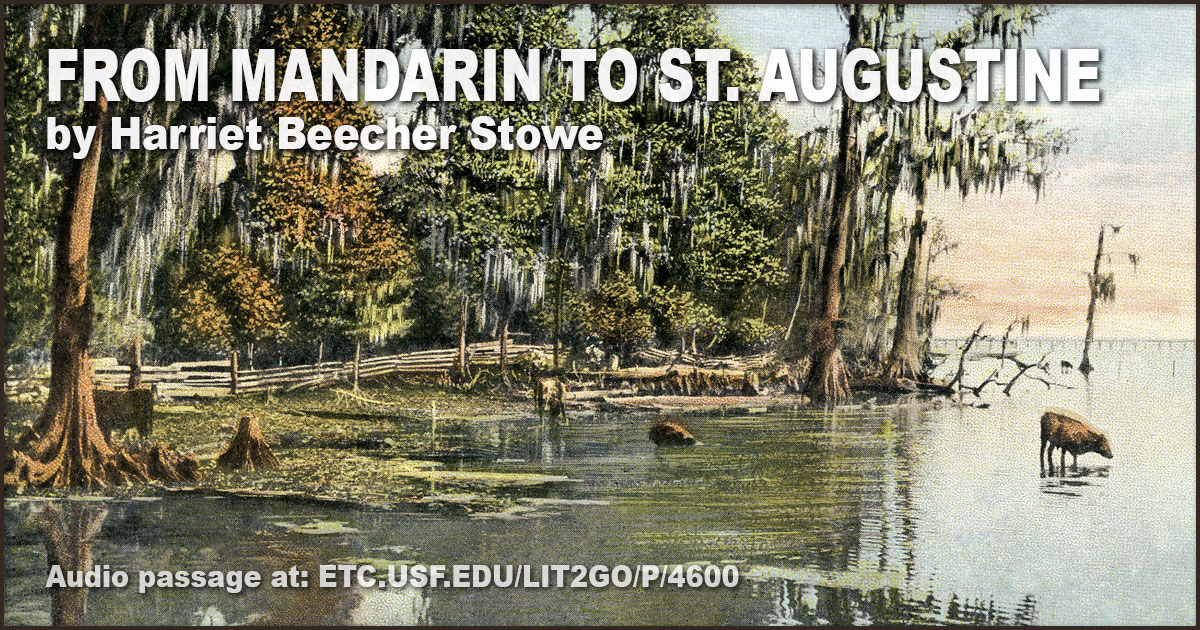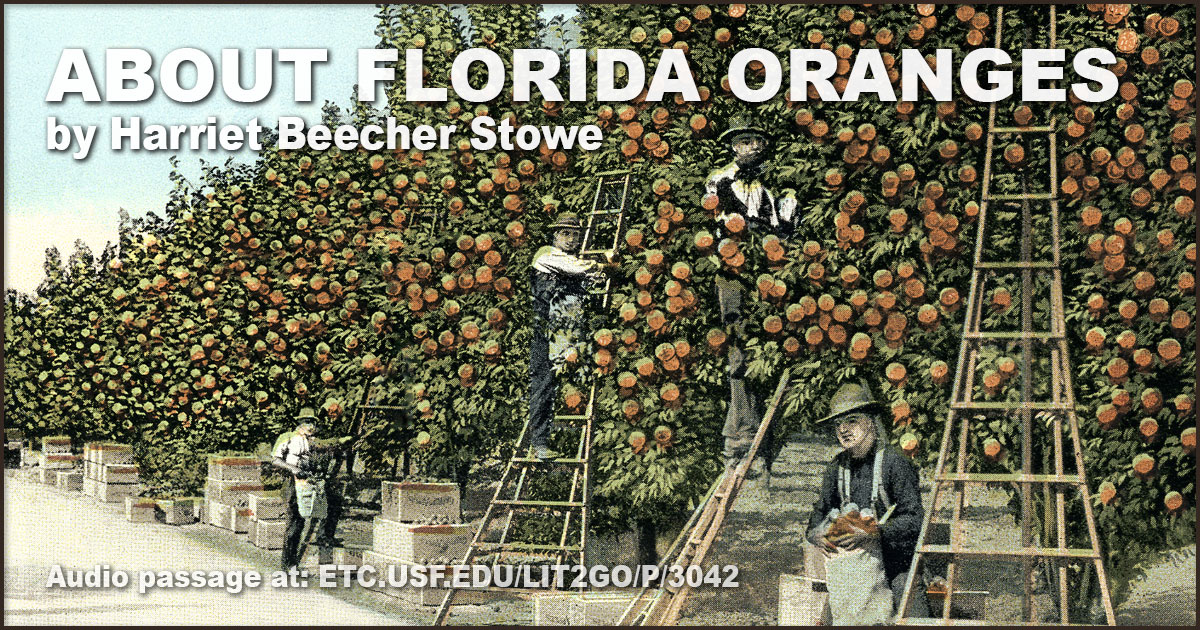June 5: Uncle Tom’s Cabin
On this date in 1851, Harriet Beecher Stowe published the first installment of Uncle Tom’s Cabin in the anti-slavery newspaper, The National Era. Uncle Tom’s Cabin became the best-selling novel of the 19th century and fueled the abolitionist cause in the 1850s. Our audiobook is a 1904 adaptation for children by Henrietta Marshall.
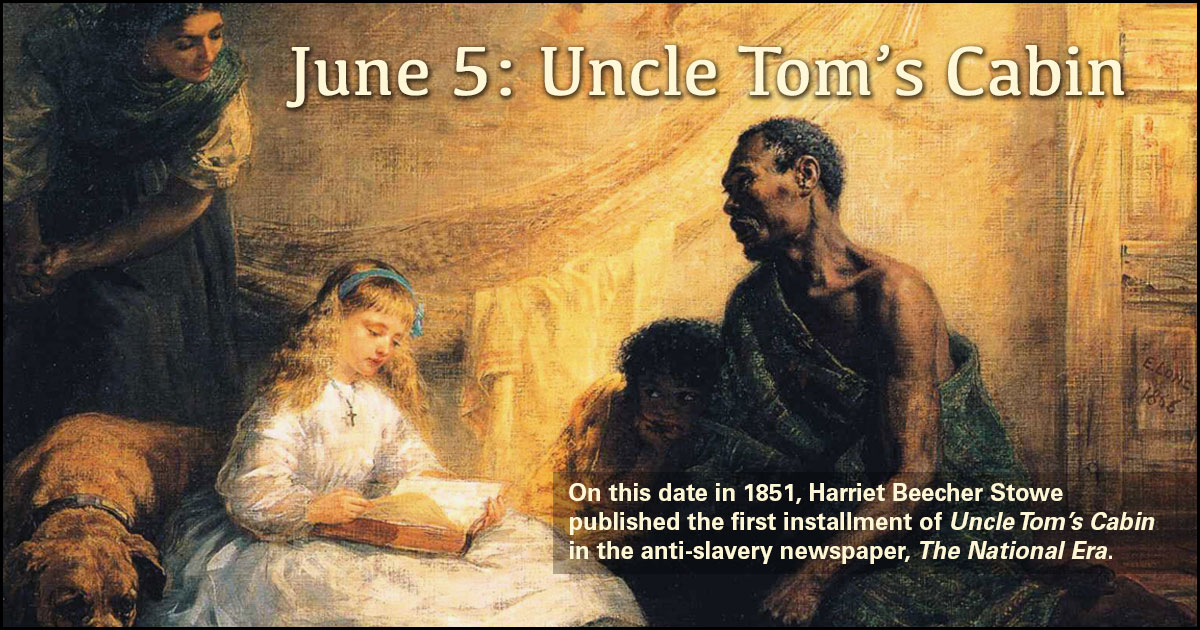
Uncle Tom's Cabin Banner
Use this banner on social media to share our collection of resources around Uncle Tom’s Cabin and its author, Harriet Beecher Stowe.
From the Author’s Preface
This tale…was told to grown-up people by a kind and gentle lady with a big loving heart. This lady was called Harriet Beecher Stowe, and she told the story to grown-up people to make them think.
We read in history of kings and queens who did great things, but the lady who wrote this book was only a simple person like ourselves, yet she did such a great thing in telling this story that she helped to make history just as much as many of these kings and queens, and perhaps her name will be remembered as long as theirs.
…I have tried to tell the story as much as possible as Harriet Beecher Stowe did, for I do not think any one could tell it better.
Uncle Tom's Cabin Told to the Children
This adaptation of Harriet Beecher Stowe’s Uncle Tom’s Cabin was made in 1904 by Henrietta Marshall, a British writer of children’s books. It was intended for students from ages 9 through 12. The audiobook and separate PDFs of each chapter are available on the Lit2Go website.
Harriet Beecher Stowe Portrait
Portrait of Harriet Beecher Stowe from the 1889 Biographical Review of Prominent Men and Women on the ClipArt ETC website.
Harriet Beecher Stowe Portrait
Portrait of Harriet Beecher Stowe from the 1912 Harper’s Encyclopedia of United States History on the ClipArt ETC website.
The Stowe House from the Dock
Stereoview of the Stowe home in Mandarin, FL, from the ClipPix ETC website. Red/blue 3D glasses required for viewing.
Gallery of Stowe Residence Stereoviews
A gallery of 3D stereoviews of the Stowe residence in Mandarin, FL, from the Exploring Florida website. Red/blue 3D glasses required for viewing the stereoviews.
Letters from Mandarin
Excerpts from Harriet Beecher Stowe’s letters to George Elliot from her home in Mandarin. Available on the Exploring Florida website.
Harriet Beecher Stowe Letters
A collection of letters to and from Harriet Beecher Stowe includes one from Oliver Wendell Holmes who reflects on the difficulty of writing after such a successful work as Uncle Tom’s Cabin. He quotes Dogberry in Much Ado about Nothing, “Comparisons are odious,” although Shakespeare turns that into the malapropism, “Comparisons are odorous.”
Additional passages by Harriet Beecher Stove available on Lit2Go
St. Augustine, Florida
Harret Beecher Stowe describes the scenery in St. Augustine, Florida. From Lit2Go. PDF. Duration: 3 minutes, 57 seconds.
The Grand Tour up the River
Harriet Beecher Stowe gives a detailed description of the vegetation and wildlife that surrounds the St. Johns River. From Lit2Go. PDF. Duration: 4 minutes, 3 seconds.
From Mandarin to St. Augustine
Harriet Beecher Stowe discusses the many wonders of nature that can be witnessed while traveling between Mandarin and St. Augustine, Florida. From Lit2Go. PDF. Duration: 3 minutes, 40 seconds.
About Florida Oranges
Harriet Beecher Stowe discusses the beauty of the Florida orange and the pitfalls that plague its prosperity. From Lit2Go. PDF. Duration: 3 minutes, 3 seconds.

